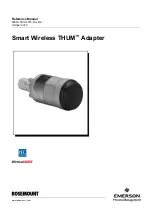
F6D4050 V1000_User Manual_08121716030_P75451-A_F6D4050-v3000_N usb ADR_mnl
Page 4 of
6159
If your wireless signal seems weak in some spots, make sure that objects such
as these are not blocking the signal’s path between your computers and wireless
router (or access point).
3. Cordless Phone Placement
If the performance of your wireless network is impaired after attending to the
above issues, and you have a cordless phone:
• Try moving cordless phones away from the wireless router (or access point)
and your wireless-enabled computers.
• Unplug and remove the battery from any cordless phone that operates on the
2.4GHz band (check manufacturer’s information). If this fixes the problem, your
phone may be interfering.
• If your phone supports channel selection, change the channel on the phone to
the farthest channel from your wireless network as possible. For example,
change the phone to channel 1 and move your wireless router (or access point)
to channel 11. (Your channel selection will vary depending on your region.) See
your phone’s user manual for detailed instructions.
• If necessary, consider switching to a 900MHz or 5GHz cordless phone.
4. Choose the “Quietest” Channel for your Wireless Network
In locations where homes or offices are close together, such as apartment
buildings or office complexes, there may be wireless networks nearby that can
conflict with yours. Use the Site Survey capabilities of your Belkin Wireless
Networking Utility to locate any other wireless networks, and move your wireless
router (or access point) and computers to a channel as far away from other
networks as possible.
Experiment with more than one of the available channels in order to find the
clearest connection and avoid interference from neighboring cordless phones or
other wireless devices.
For more Belkin wireless networking products, use the detailed Site Survey and
wireless channel information included in your User Manual.
5. Secure Connections, VPNs, and AOL
Secure connections typically require a user name and password, and are used
where security is important. Secure connections include:
• Virtual Private Network (VPN) connections, often used to connect remotely to
an office network
• The “Bring Your Own Access” program from America Online (AOL), which lets
you use AOL through broadband provided by another cable or DSL service
• Most online banking websites
• Many commercial websites that require a user name and password to access
your account





































